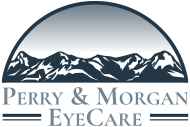Dry eyes can make life miserable, causing redness, irritation, and blurred vision. People with chronic dry eye disease experience these symptoms daily and often find relief hard to come by. However, scleral lenses can offer a promising solution for those who have found other treatments ineffective.
Scleral lenses can treat dry eyes by providing a fluid reservoir to help keep your eye hydrated throughout the day. Even if you find wearing contacts difficult due to dry eye symptoms, scleral lenses can help you find relief and discover all the benefits contacts offer.
What Are Scleral Lenses?
Scleral lenses are specialized rigid gas-permeable (RGP) contact lenses designed to treat various vision problems. They have a larger diameter than traditional contacts and rest on the sclera—the whites—rather than the cornea.
For perspective, an average rigid gas-permeable contact lens is about 9–9.5 mm. The smallest scleral lenses are 14.5 mm but can be as large as 24 mm. That’s over twice the size of your traditional RGP lens!
Sclerals also have a unique shape that allows them to “vault” the entire cornea and create a tear-filled chamber that adds extra moisture to the cornea.
Scleral lenses are used to treat various conditions, including:
- Dry eye disease
- Keratoconus
- Astigmatism
- Other corneal irregularities
They’re also commonly used to protect and heal the eye post-surgery. Due to their unique design, these lenses may provide a more stable fit than traditional contact lenses.
Symptoms of Dry Eye Disease
Many people suffer from dry eye disease, which occurs when your eyes don’t produce enough or low-quality tears. Dry eyes present with a range of symptoms, including:
- A gritty, dry, or scratchy sensation in your eyes
- Blurred vision, especially after reading, using the computer, or engaging in other activities that require prolonged focusing
- Redness in and around your eyes
- Sensitivity to light
- Eye fatigue
- Difficulty wearing contact lenses
- Presence of mucus
Some people may also experience excessive tearing, which is your body’s way of compensating for the dryness. However, these tears are often low quality and don’t provide the necessary hydration.
What Causes Dry Eyes?
Dry eyes are essentially caused by an issue with the tear film, the essential layer of tears that protect, nourish, and hydrate the eye’s surface. Many complex factors can disrupt the tear film and lead to dry eye disease, including:
- Aging: Our eyes naturally produce fewer tears as we age.
- Meibomian gland dysfunction: The meibomian glands produce oil for your tear film and can become blocked or irritated from various issues, leading to an inefficient tear film.
- Certain medications: Medications such as antihistamines, decongestants, blood pressure medication, and antidepressants can all cause ocular side effects.
- Environmental factors: Exposure to wind, smoke, dry air, and other irritants can cause your tear film to evaporate too quickly.
- Underlying medical conditions: Certain autoimmune diseases, such as Sjögren’s syndrome, rheumatoid arthritis, and lupus, can cause dry eye symptoms, as can diabetes, thyroid disorders, and other health problems.
- Too much screen time: People tend to blink less while working on a computer or another digital screen, which could cause their eyes to dry out and result in digital eye strain.
Scleral Lenses for Dry Eyes
Scleral lenses are designed to vault over the cornea and gently rest on the sclera. Unlike traditional contact lenses that sit on the cornea, scleral lenses create a dome-shaped reservoir of fluid between the lens and cornea. This tear-filled chamber can provide a barrier that acts as a protective layer for the eye to help keep the eyes hydrated and prevent damage associated with dryness.
They’re also crafted from a gas-permeable material that allows oxygen to flow freely to the eye, essential for keeping your eyes healthy and comfortable. In fact, some people have said that scleral lenses were more comfortable and offered clearer vision than soft contacts while reducing their need for eye drops.
Scleral lenses can also be part of broader dry eye treatment. You can use them with artificial tears or optometrist-recommended solutions such as intense pulsed light (IPL) treatment to unblock meibomian glands.
Other Benefits of Scleral Lenses
Scleral lenses and other rigid gas-permeable lenses offer unique benefits, including:
- Crisper vision
- Less expensive over the lifespan
- Easier to handle
- More durable
Saying Goodbye to Dry Eyes
Scleral lenses can be a game-changer for chronic dry eyes because they provide the cornea with constant hydration, effectively relieving uncomfortable dry eye symptoms. Perry & Morgan EyeCare offers a range of dry eye treatments to help your eyes feel comfortable throughout the day. If you’re looking for a personalized solution to dry eye disease, book an appointment in Perry or Morgan, Utah, to discuss dry eye therapy today and see if scleral lenses are right for you.



